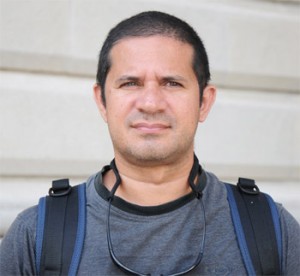A Cuban Passionate about Archeology

HAVANA TIMES — Few people believed that an archaeological expedition can be organized with only US $200, no transportation and very little equipment. However Cuban scientist Daniel Torres has spent 20 years doing just that, and the results have been such that the National Geographic Society has just presented him with an award.
“We’re faced with a lot of limitations when it comes to resources. I have projects in Maisi, at the eastern extreme of the island, though the transportation situation is a disgrace…it’s terrible…and neither I nor the institution own vehicles,” he explained.
“I can assure you that archeology in Cuba is a very complicated matter owing to the resources required and because there are few institutions charged with helping such efforts. Although Cuba has had archaeologists since the nineteenth century, today there’s not even a program or department at the university level.”
The poor transportation situation
One of his most outstanding areas of work is research concerning a village of indigenous inhabitants in Cuba who had magnificent ceremonial plazas, demonstrating that these communities were more socially developed than previously thought.
However, the excavation site is at the eastern end of the island, which means traveling about 750 miles loaded with tools and equipment. Ultimately, everything has worked out, as some institutions provided the vehicles and those going on the expedition paid for the fuel. The adventure starts from when the research team gets in their antiquated Russian buses.

“Many things come out of our pockets, there’s no way around it,” he explained, but added “after 18 years of visiting the area, the community is like my family, so at least I don’t have to worry about food.”
Awards and the Embargo
Daniel has just been awarded the “Emerging Explorer Prize” by the National Geographic Society. With this, he saw the heavens open since the distinction gives his work much higher visibility and comes with a $10,000 cash prize – enough to make dozens of expeditions.
But his joy was short-lived. At the Miami airport he was held for four hours with no explanation and National Geographic was then prevented from handing over the money to him because the US economic embargo of Cuba prohibits it.
Yet the problem is even greater than that. “The relations with National Geographic are complicated because they must abide by these regulations; meanwhile we have no access to the funding and not all the pieces of equipment we need have received authorization for sending to Cuba.”
Pre-Columbian Journeys
Despite all of this, Daniel has a joint project with National Geographic, which is sending him equipment to investigate a ship that sank off the coast of Havana. The craft was discovered in the 1950s, stripped of various items and then forgotten for decades.
“In 2002, these items were found and sent to Norway for archeological dating. After six months, the news came that it was from the year 790 A.D. and that pieces of iron metal were found, a material that was unknown in the Americas at that time,” explained Daniel.
After a decade of research, they have now re-located the area of beach where the ship should be, but now they have to wait for the winter for the beach to be empty and then negotiate with the environmental authorities for drilling into the banks of sand.

Drones
Less spectacular, but no less important, was his discovery of large pre-Columbian populations at the eastern end of Cuba, which was yet another sign of a higher level of development than previously suspected.
Daniel explained to us that “Seven or eight colleagues usually go on these expeditions, along with photographers, film crews, archaeologists and surveyors. It varies…depending on the objectives of the expedition.”
They go to amazing lengths to cut costs. “I do the topographical survey myself because doing this with precision instruments can cost $16,500 – a figure we can’t afford,” says Daniel.
When they needed aerial photos but couldn’t hire a plane, they turned to the Internet and their own imaginations. “We designed a device with a camera that we attached to a kite…a kind of drone… which we flew so that we could take our photos and videos.”
(*) An authorized translation by Havana Times (from the Spanish original) published by Cartas Desde Cuba.






Dear Sir,
Are you available for hire? My details are below.
Mr torres, I have not heard from you, did you check out my site and findings!
please reply
I need to talk to Daniel, think I might have found two live dinasours below cuba, east of the island of youth! I have the pic posted on my goggle site, humpmaster senior or he can email me at [email protected] I cant zoom in enough to verify, but sure look like amphibious prehistoric animals !
thanks Terry
Daniel Torres
Daniel Torres
Fernando, I think you have been had. Cuban films have been awarded prize money from US film festivals. Cuban musicians are paid to perform by US concert promoters. Cuban scientists have been awarded study grants from Harvard and University of California, Berkeley (a good friend of mine). This story has some problems. Sounds like another chance to blame the embargo for a problem owed to another cause. Check your facts again.
Can a Canadian take the money awarded from National Geographic to Daniel?